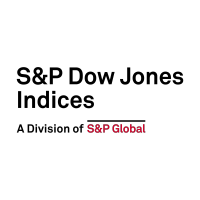Tag Archives: liquidity
The S&P/ASX Index for “Larger,” More Liquid Small Caps
What would you get if you carved out the 100 smallest companies in the S&P/ASX 200 into their own index? You’d have the S&P/ASX 200 Ex-S&P/ASX 100 Index. Alternatively, you’d have also segmented the largest 100 companies in the S&P/ASX Small Ordinaries. Companies listed on the ASX are grouped into broad market, large-, mid- and…
- Categories Equities
- Other Tags
Navigating Private Credit Liquidity Challenges with Indices
What’s driving insurance companies’ increased allocation to private credit? S&P Global Market Intelligence’s Lynn Bachstetter joins S&P DJI’s Frans Scheepers and State Street Global Advisors’ Bill Ahmuty to explore how indices like the iBoxx Liquid Leveraged Loan Index are helping insurers identify and navigate liquidity challenges in private credit markets.
- Categories Fixed Income
- Other Tags
What Do Insurance Companies Need to Know About SPIVA?
How and when are insurers implementing index-based strategies as they seek liquidity, diversification, and risk mitigation? S&P DJI’s Raghu Ramachandran and Anu Ganti join BlackRock’s Andrew Masalin to discuss what’s driving passive outperformance and the use of ETFs by insurers through the lens of SPIVA.
- Categories Equities, Fixed Income
- Other Tags
A Tactical Look at Sectors
How are advisors using sector data to understand market trends and inform investment decisions? S&P DJI’s Anu Ganti joins Fairlead Strategies’ Katie Stockton to discuss practical applications for sector indices.
- Categories Equities
- Other Tags
Exploring Two Decades of Fixed Income Innovation
Take a closer look at the latest SPIVA results as S&P DJI’s Brian Luke and BlackRock’s Stephen Laipply discuss how indexing works for fixed income, the iBoxx liquidity ecosystem, and what a growing range of passive tools could mean for yield seekers as income returns to fixed income.
- Categories Fixed Income
-
Other Tags
Active vs. Passive, Bond ETFs, bond yields, Brian Luke, credit risk management, Derivatives, duration risk management, fixed income, Fixed Income ETFs, fixed income mutual funds, futures, high yield corporates, iBoxx, income generation, indexing, interest rate management, investment grade corporates, iTraxx, options, rising rates, S&P Indices vs. Active, SPIVA, total return swaps
- Categories
- Fixed Income
- Other Tags
- Active vs. Passive, Bond ETFs, bond yields, Brian Luke, credit risk management, Derivatives, duration risk management, fixed income, Fixed Income ETFs, fixed income mutual funds, futures, high yield corporates, iBoxx, income generation, indexing, interest rate management, investment grade corporates, iTraxx, options, rising rates, S&P Indices vs. Active, SPIVA, total return swaps
Tip of the Iceberg: Fixed Income ETFs in Times of Crisis
20 and 15 years after the launches of the first ETFs based on the iBoxx USD Liquid Investment Grade (IG) Index and iBoxx USD Liquid High Yield (HY) Index, respectively, ETFs are increasingly used to trade fixed income without the necessity of transacting individual bonds. The tradability of bond ETFs has been leveraged by a…
- Categories Fixed Income
- Other Tags
What Fixed Income Index Liquidity Means for Insurers
How are index-based strategies helping insurers measure and address liquidity in their portfolios? Take a closer look at the why index liquidity matters with S&P DJI’s Nick Godec, Morgan Stanley’s Meredith Shaw, and BlackRock’s James Winslow.
- Categories Fixed Income
- Other Tags
Bringing Transparency to Green Bonds
As the global green bond market continues to grow, how are indices helping investors assess greenium and the potential opportunity set? S&P DJI’s Brian Luke joins VanEck’s Bill Sokol and Phil Kirouac for a closer look at how indexing works for green bonds.
- Categories Fixed Income, Sustainability
- Other Tags
Green Pools: Evolving ESG Trading Ecosystems
Compared to the wide range of liquid, tradable instruments associated to more traditional benchmarks like the S&P 500®, the trading ecosystem of ESG-based investment products is still in its infancy. But, with the increased volume in listed futures linked to the S&P 500 ESG Index and S&P Europe 350® ESG Index, change is afoot. Of…
- Categories Sustainability
-
Other Tags
2022, Canada FA, clean energy, climate, ecosystem, equities, ESG, ETF, ETFs, futures, IET, Index Investment Strategy, market efficiency, Net Zero, Option, options, passive management, S&P 500, S&P 500 ESG Index, S&P DJI ESG, S&P Europe 350 ESG, S&P Europe 350 ESG Index, Sherifa Issifu, Trading, Trading Volumes, U.S., U.S. Equities, US FA, volumes
- Categories
- Sustainability
- Other Tags
- 2022, Canada FA, clean energy, climate, ecosystem, equities, ESG, ETF, ETFs, futures, IET, Index Investment Strategy, market efficiency, Net Zero, Option, options, passive management, S&P 500, S&P 500 ESG Index, S&P DJI ESG, S&P Europe 350 ESG, S&P Europe 350 ESG Index, Sherifa Issifu, Trading, Trading Volumes, U.S., U.S. Equities, US FA, volumes
Has the Illiquidity Trade Run its Course?
S&P Global Market Intelligence’s Lynn Bachstetter explores whether illiquidity still has a place in insurance investments with S&P Global Ratings’ Carmi Margalit, F&G’s Leena Punjabi, and BlackRock’s Peter Gailliot.
- Categories Equities, Fixed Income
- Other Tags












































